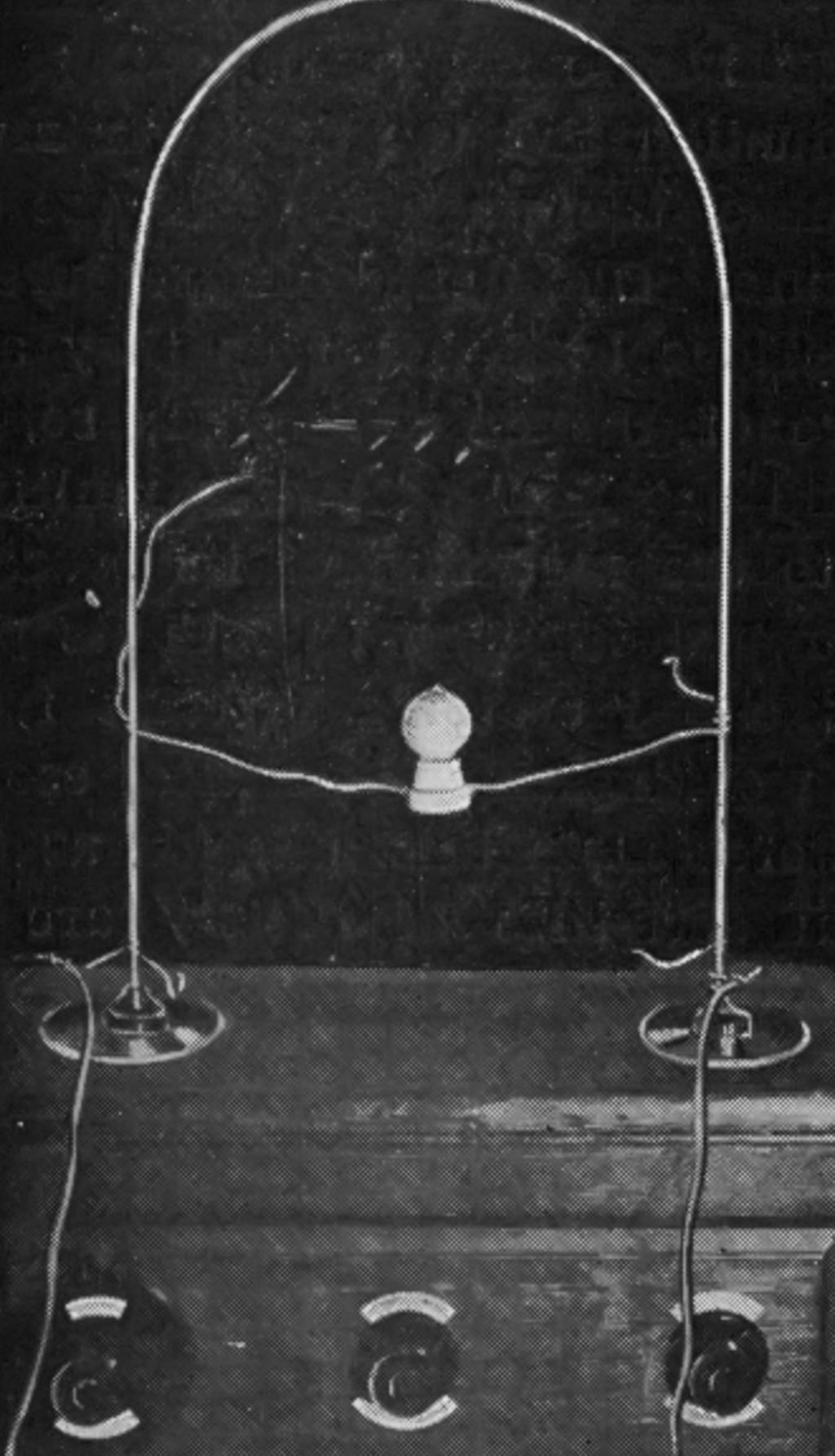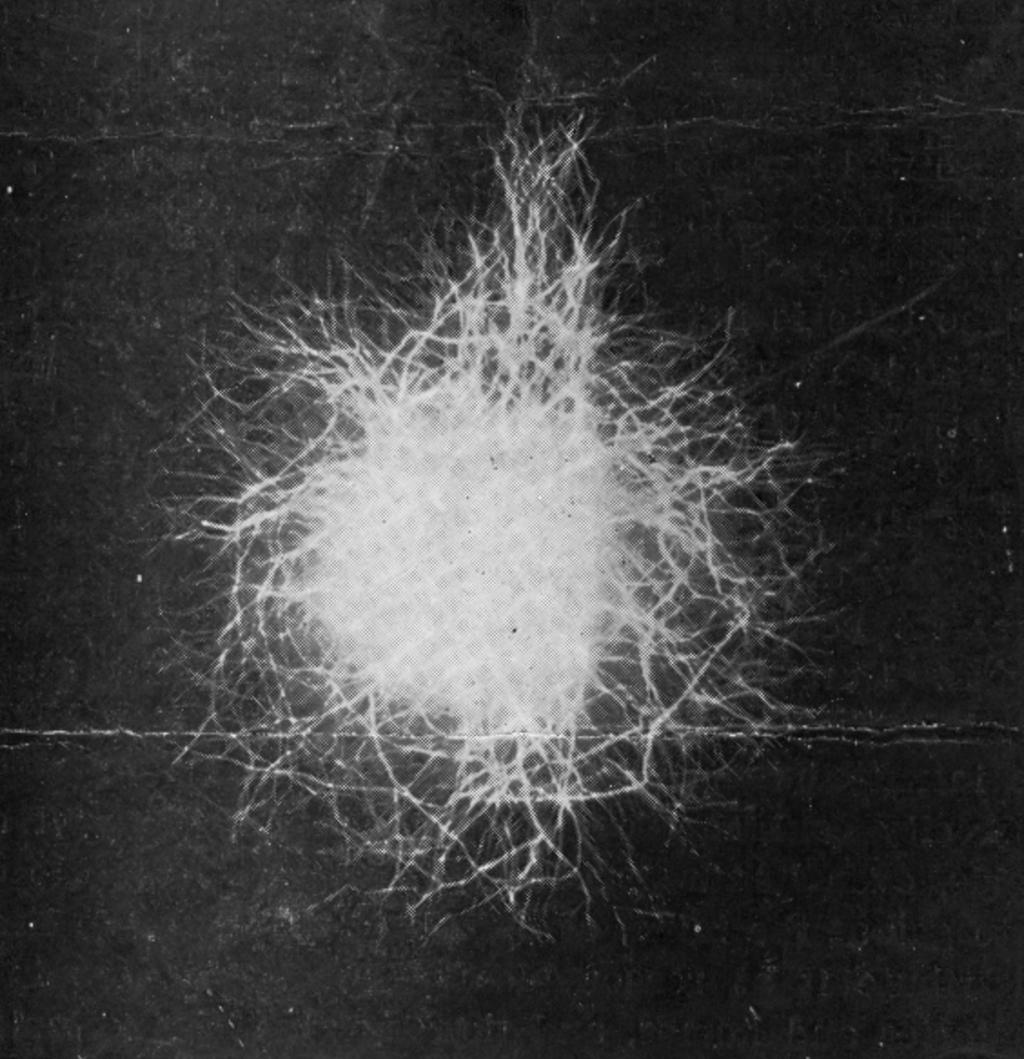TCBA Volume 20 - Issue 1
Page 15 of 18
Tesla Coils Resurrected
Scientific American, January 27, 1906
High-Potential Discharges.
By A. Frederick Collins.
The various manifestations of high-frequency and high-potential discharges offer a fertile field of research, especially for the amateur investigator, since it is a subject that has received comparatively little attention considering its significance as revealed in its recent applications to electrotherapy, radiography, and wireless telegraphy.
The current has the choice of two paths - an easy one through the copper bar and a path of higher resistance through the lamp - and it chooses the latter. Ordinary currents would take the easier path.
The term “electric discharge” is understood to include all modes of equalization of differences of potential between the terminals of a source of electrical energy on their connection by a conductor, by the removal of their charges by a stream of electrical particles of air, or by a sudden discharge that breaks down the air or other intervening dielectric. These are the three chief methods of restoring the electrical equilibrium, and are known respectively as the conductive, the connective, and the disruptive discharge.
The various forms may be further subdivided into alternating, arc, brush, brush and spray, dead-beat, flaming, glowing, lateral, oscillating, periodic, streaming, stratified, impulsive, and periodic discharges, and these may be produced by utilizing a source of direct or alternating current of low voltage, as for instance a commercial generator; a high-potential apparatus as an induction coil, or a high-potential, high-frequency arrangement, as a Tesla coil, depending upon the requirements of the various cases.
In this review we are concerned only with disruptive and connective discharges, the former in its application to wireless telegraphy and the latter in its relation to the human body. Since only potentials such as can be obtained with an ordinary induction coil are needed for disruptive discharges, these will be described first.
In the production of a discharge of this nature there are two diametrically opposite conditions involved, the first representing an oscillator and spark-gap in an unenergized and non-conductive state, and the second when it is energized and rendered highly conductive, thus completing the circuit. To bring about this result the arms of the oscillator are charged with high-potential energy impressed upon them, which is set up in the secondary of the coil in the form of currents. This kinetic energy is then converted into electrostatic energy, and when the static charge is maximum for a given resistance offered by the dielectric between the surfaces of the spark-gap electrodes heat is evolved in consequence, and when a certain critical temperature is reached the positive electrode volatilizes, and it is this effect that forms the initiative in breaking down the dielectric of the spark-gap.
The law relating to the heat evolved states that it is proportional to the square of the charging current and to the resistance of the dielectric between the positive and negative electrodes forming the boundaries of the spark-gap. The energy that is emitted from the positive electrode is proportional to the potential difference impressed on the oscillator system and the specific inductive capacity, while it is inversely as the distance separating the spark-gap electrodes. The length of the spark that passes depends also largely on the following factors, namely, the difference of potential between them, the character of the medium that separates them, and on the density or pressure of the dielectric through which the discharge passes.


